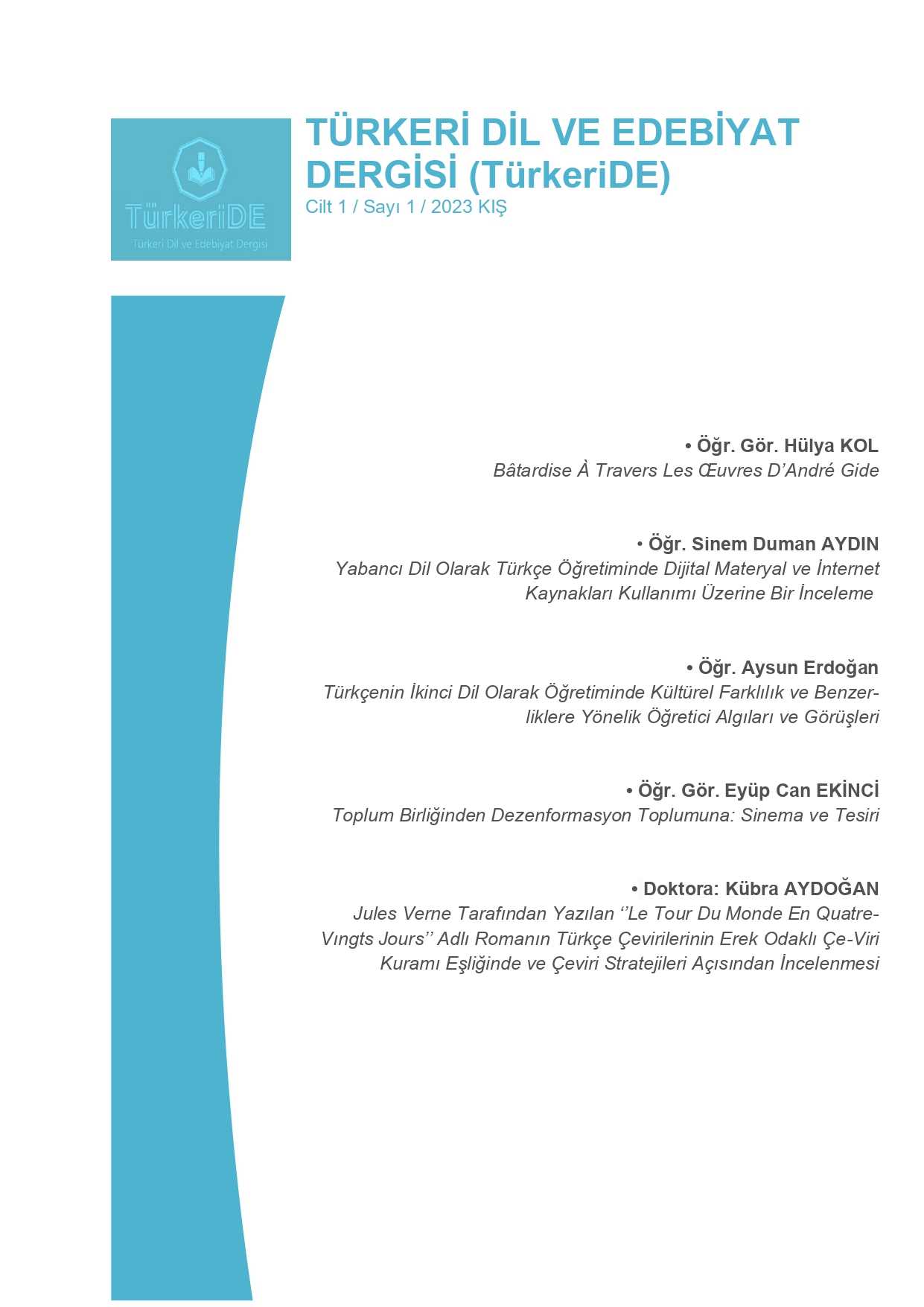TÜRKÇENİN İKİNCİ DİL OLARAK ÖĞRETİMİNDE KÜLTÜREL FARKLILIK VE BENZERLİKLERE YÖNELİK ÖĞRETİCİ ALGILARI VE GÖRÜŞLERİ
Keywords:
language, culture, PİKTES, cultural differences, cultural similiratiesAbstract
In the teaching of Turkish as a foreign language, various components coexist and impact instruction. One of these components is culture. In this context, the aim of the study is to examine instructors' perceptions and views on cultural transmission in the teaching of Turkish as a foreign language. Conducted within the framework of a qualitative research approach, the study involved the collection of data through a semi-structured interview form previously developed by the researcher. The gathered data, reflecting instructors' diverse perspectives, were analyzed. The 10 questions in the form were prepared by the researcher based on information obtained from relevant studies in the field, shaped by expert opinions, and applied to instructors in the study group. Five interviews were conducted online, and five were face-to-face, each lasting an average of one hour. After the interviews were completed, they were transcribed and recorded in digital format by the researcher. According to the findings of the research, cultural instruction takes place alongside language instruction. However, factors such as the instructor's attitude, experience, classroom control, and environment influence cultural acquisition
References
Alyılmaz, S. (2018). Türkçenin Yabancı Dil Olarak Öğretiminde Hedef Kitlenin/“Öğrenen”in Önemi. Uluslararası Türkçe Edebiyat Kültür Eğitim Dergisi, 7(4), 2452-2463.
Aydın, G. (2020). Yabancı/ikinci dil öğretiminde kültür ve kültürel etkileşim. Gülnur Aydın (Ed). Kültür Öğretiminin Temel Kavramları (1-47). Ankara: Pegem Akademi
Börü, N. ve Boyacı, A. (2016). Göçmen Öğrencilerin Eğitim-Öğretim Ortamlarında Karşılaştıkları So-runlar: Eskişehir İli Örneği. Electronic Turkish Studies, 11(14), 123-158.
Delibaş, M. (2023). Türkçenin Yabancı Dil Olarak Öğretimini Etkileyen Faktörler ve Ortak Benzerlikler Oluşturma Süreci. İ. Aras, G. Köşker & G. Karasu (Ed). Yabancı Dil Öğretiminde Dil ve Kültür içinde, 115-154.
Elbir, B. ve Aka, F. N. (2015). Yabancılara Türkçe öğretiminde kültür aktarımına yönelik yapılan çalış-maların değerlendirilmesi. Turkish Studies, 10(12), 371-386.
Kalfa, M. (2013). Yabancılara Türkçe öğretiminde sözlü kültür unsurlarının kullanımı. Millî Folklor, 25(97), 167- 177.
Morgan, D. L. (1996). Focus groups as qualitative research (C. 16). New York: Sage publications
Ökten, C. E. ve Kavanoz, S. (2014). Yabancı dil olarak Türkçe öğretimini hedefleyen ders kitaplarında kültür aktarımı. Turkish Studies, 9(3), 845-862.
TDK (2019). Türkçe sözlük (11. bs.). Ankara: TDK Yayınları.
Yıldırım, A. ve Şimşek, H.(2008). Sosyal Bilimlerde Araştırma Yöntemleri. Ankara: Seçkin Yayıncılık.
Yın, R. K. (2002). Case Study Research. California: Sage Publication
Downloads
Published
How to Cite
Issue
Section
License
Copyright (c) 2023 TÜRKERİ DERGİSİ

This work is licensed under a Creative Commons Attribution 4.0 International License.


